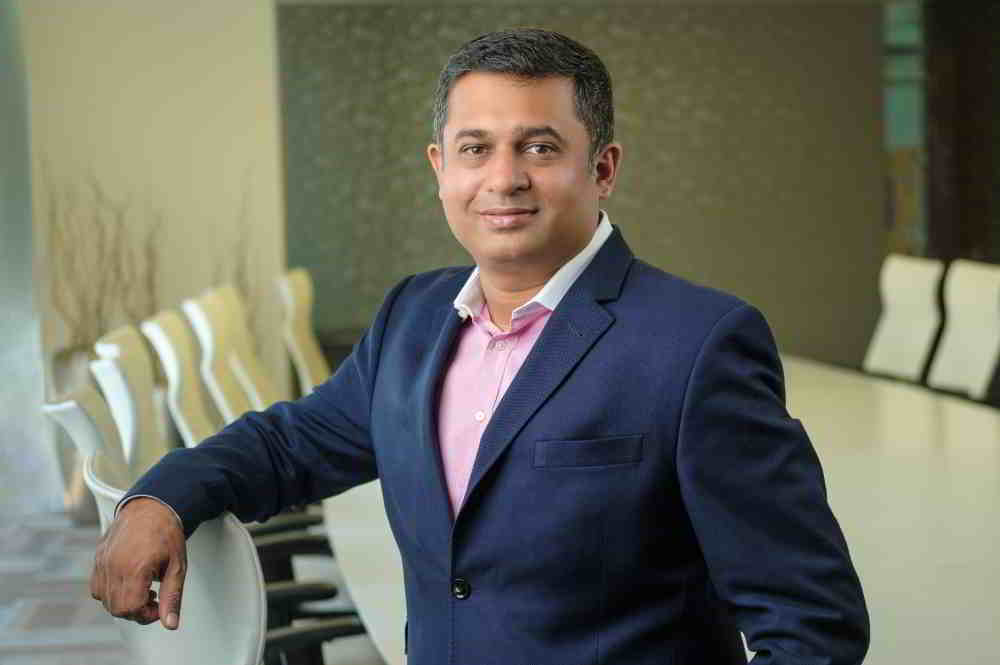The service economy was big news in 2004. Back then, most software companies in India were becoming service companies. But Eka Software Solutions, which offers commodity risk management software to agri, mining, metals and energy suppliers, decided to buck the trend. It took a bold risk and decided to become a product company. The bet paid off, and Eka was quickly signing on new customers. Eka took another big bet in 2015 when it saw the potential of the cloud and decided to build its cloud platform. It showed cloud leadership and began investing in a cloud-platform three years before its customers started spending on cloud solutions. It was right again.
The company is connecting end-to-end workflows for enterprises. These workflows are crucial for trading, purchase, or sales in a world of CTRM (commodity trading, transaction, and risk management). The workflows include procurement (e-sourcing automation), trading and risk automation to the supply chain leading to the end customer.
Today Eka Software Solutions has over 100 customers that include big brands such as Cargill, Louis Dreyfus, COFCO, Rio Tinto, Vale and Petronas. And it is on track to add another 150 customers this year.
But it takes a leader with a vision to build a great company. Meet Manav Garg, CEO & Founder Eka Software Solutions.
Manav founded Eka Software Solutions in 2004 with the vision to modernize commodity management. He’s a former commodity trader himself and one of the pioneers who successfully built a global software company from India in an era when everyone was focusing on services.
Today, he is credited with steering Eka’s transformational growth into a platform company driven by cloud for supply chain and financial management.
A passionate entrepreneur, product innovation and start-up acceleration are key focal points for Manav, and he takes an active role in supporting innovations in software products.
Manav is widely recognized for his leadership in the enterprise software industry and was listed in the “40 Under 40” compilation of executives in India by Fortune Magazine.
Besides mentoring, Manav is invested in building a robust Indian SaaS start-up community by helping disruptive startups build and scale.
Perseverance and discipline are two watchwords Manav lives by and believes these are key to achieving all goals, be it in business or otherwise.
Digital Creed interviewed Manav during a podcast, and here are the edited excerpts from the interview.
PODCAST: Listen to the Podcast interview with Manav Garg
DC: Let’s begin by discussing Eka’s journey. You started with the modernization of commodity trade and risk management (CTRM) for agricultural commodities. And along the years, you expanded your portfolio to include energy, supply chain, analytics, financial management and now e-sourcing and sustainability – all driven by a cloud-native platform. Can you take us through the journey, tell us about some of the challenges you faced and how you overcame those challenges?
Manav: Eka’s journey started in 2004 when I left my job as a trader in Singapore and decided to come down to Bangalore to build a software company. Those were very early days of product software from India. It was primarily a service-oriented economy. But we thought that Product was going to be the game going forward, and people will value IP more. So, we started our journey by building a product company from India.
Since I had a background in agri-trading, I understood the business well, and we started our business with that. We hired a team in Bangalore to develop the software.
In our first ten years, from 2004 to 2014, we had linear growth, were profitable, and we signed on big customers like Louis Dreyfus and others. We expanded our portfolio from agri to energy, and then to metals & mining. We raised about $55 – $60 million in the process.
In 2014, we acquired two companies, one in Canada and the other in Australia to expand our portfolio deeper into energy and supply chain of commodities.
We added global services and support through our 10 global offices around the world.
At the end of 2014, the world witnessed a massive oil crash and the commodity market sank. Many of our customers had heavy losses, and no one could see around the corner and see the downturn coming.
We were faced with a choice. Either we could continue to acquire companies (we had money on our balance sheet), and continue with a licensed software model. But in 2015, I also saw the opportunity that the world was turning around and cloud is beginning to become important; at that time AWS and Microsoft were speaking a lot about cloud. And I thought the enterprise software world is going to change completely in 2 – 3 years. I could see analytics becoming important. Data would become important so companies would want to analyze that data; transactions would be more collaborative in nature.
So instead of acquiring more companies in 2015 – 16, we decided to build an entirely new platform. It would be cloud-native and much more than commodities. We used the knowledge of various industries to build a horizontal platform on which we could build various other solutions for supply chain, and financial management.
Since then, we took that big bet, and it was a big risk in 2015-16. We launched the platform in 2018. We then brought all our products natively onto the cloud including CTRM, and the existing supply chain. And today we have 100 customers — we acquired 45 customers in the last two years, including some large brands like Cargill, Louis Dreyfus, COFCO, Rio Tinto, Vale and Petronas.
We are now moving to being a platform for mission-critical software across supply chain information management. And we are growing very rapidly.
DC: Entrepreneurship and risk go hand-in-hand. Can you give us a few tips about risk taking in business?
Manav: Yes, entrepreneurship and risk go hand-in-hand. Anytime you start (a venture) there is a massive risk on the other side. The level of risk changes at various points in time, when building a company. We could have still grown and built a good company. But if you really want to build something transformative and want to go with the changes in the industry, the risk-taking ability has to be bigger.
If you really want to build something transformative and want to go with the changes in the industry, the risk-taking ability has to be bigger.
DC: As customers were evolving from legacy systems and embracing digital technologies, Eka had to evolve as well. There was a need for sophisticated platform-driven solutions. How did your company grow to fulfill this requirement?
Manav: It’s actually the other way round. We took a bet on the cloud much before the customer started spending on the cloud. In a legacy enterprise software market, customers are pretty comfortable with their landscape and they want to be sure about the trend before they start investing in any new technology. So, we took the call almost three years before the industry started looking at cloud as a mainstream part of this selection process. That’s the reason we are now in the forefront of a modern cloud system, for direct materials, for financial management and supply chain. We were three years ahead of time and we could build it with the core components, and we avoided shortcuts to build the platform.
Therefore, we could now launch more solutions at a faster clip. In a way, we showed the cloud leadership to the industry. We spoke about the advantages of cloud in reducing operational costs, scalability, flexibility, and to add more solutions as you grow. So that’s how we have evolved the industry.
We work with very large customers in the industry, and we work closely with them to understand how they view the technology. The pandemic accelerated the adoption of digital technologies.
During the pandemic, every piece of work is remote and more collaborative. And there is far more resilience required in business. You need to have supply chain resiliency.
So that has also helped.
We work closely with customers, predict what they want to do next, and invest ahead of time.
We are connecting end-to-end workflows which are required for trading, purchase, or sales — all the way from procurement (e-sourcing automation) to trading and risk automation to supply chain leading all the way to the end customer.
We took the call almost three years before the industry started looking at cloud as a mainstream part of this selection process. That’s the reason we are now in the forefront of a modern cloud system, for direct materials, for financial management and supply chain.
DC: You recently undertook a rebranding exercise to align it with your vision. What is the ‘Power of One’ vision all about?
Manav: Power of One is one integrated system across your business which can cover a majority of your workflows and can give you supply chain resilience; you are able to see the risk in near real-time, and you are able to make faster decisions. And therefore, you can be ready for the future of work that we are all moving towards. The future of work will be more collaborative, more remote, and will automate every single workflow in the enterprise — and enable the business to react faster to the market or to be prepared for the changes that you cannot foresee.
DC: What are your growth plans going forward?
Manav: We are launching the e-sourcing solution. During the pandemic there is more need to connect and work with your suppliers and customers online, because you can’t see them as often as you could before. That will save costs for companies and provide them information at a much faster pace.
We are also launching a treasury solution where reconciliation processes or invoices and cash management becomes more efficient. Our vision is to cover every single workflow in the enterprise that affects mission critical areas at least in the trade materials space.
India is the main R&D centre for us, through which the entire platform is built and maintained. We continue to invest a significant portion of our revenues into R&D to keep up with customer demand. We invest 25% of revenues in R&D. We hired 100 people last year and this year we will hire another 150 people around the globe.









